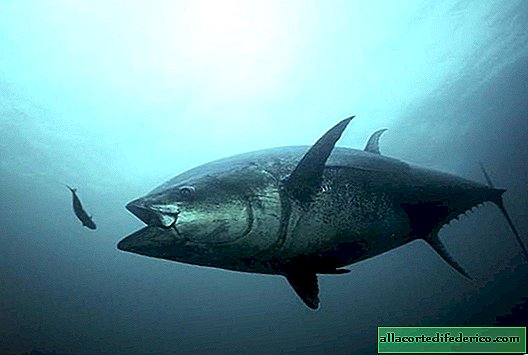Scientists have discovered a tuna hydraulic control system for fins
Tuna swim beautifully. They are able to overcome huge distances at speeds up to 75 km / h. For example, a fish born in the Sea of Japan can bask in the waters of California or Mexico in just a couple of months. Recently, scientists have found that the lymphatic system helps the tuna in fast and long swimming - part of the body, from which no one expected it. Due to its influence on fins, tuna became one of nature's outstanding engineering works.
Fast and Mysterious
To begin with, we will understand what the lymphatic system is. This is a network of vessels and nodes filled with a transparent liquid (lymph), which in vertebrates supplements the circulatory system and plays an important role in the metabolism, as well as the purification of cells and tissues of the body. She has nothing to do with limb control, at least in none of the vertebrates except tuna. In these fish, it acts as a hydraulic system that helps them chase prey.

Tuna has a very smooth, drop-shaped body and small fins to cut through the water. These fins move very filigree, their subtle movements are difficult to notice in the wild.
During the study of fins, scientists found inside a strange cavity filled with fluid under the second dorsal and posterior fins - these are vertical fins on the back and stomach of the tuna. Finding out that the fluid gets there through the lymphatic system, scientists first decided that in this way the fish regulates the temperature. This was just a hypothesis, because no one had ever seen the lymphatic system integrated into fish fins.
Tuna will share with robots
The reality was even more amazing. Researchers found that the lymphatic fluid in the cavity, and then into the canals in the fin itself, is pushed by small muscles at its base. The liquid sharply raises the fins vertically. Frozen fins become a powerful support for tuna, allowing the fish to make sharp, quick turns in the water: it's like rowing with a rubber hose, and then picking up a wooden oar.

Researchers studied mackerel - the evolutionary line from which tuna came from, and did not find a similar fin control system there. But the Pacific Bonito and Spanish mackerel, close relatives of tuna, have a similar structure. Apparently, in the process of evolution, some species of this line developed this mechanism within themselves, while others dispensed with it.
Scientists hope that hydraulic tuna technology will prove useful in robotics.

















